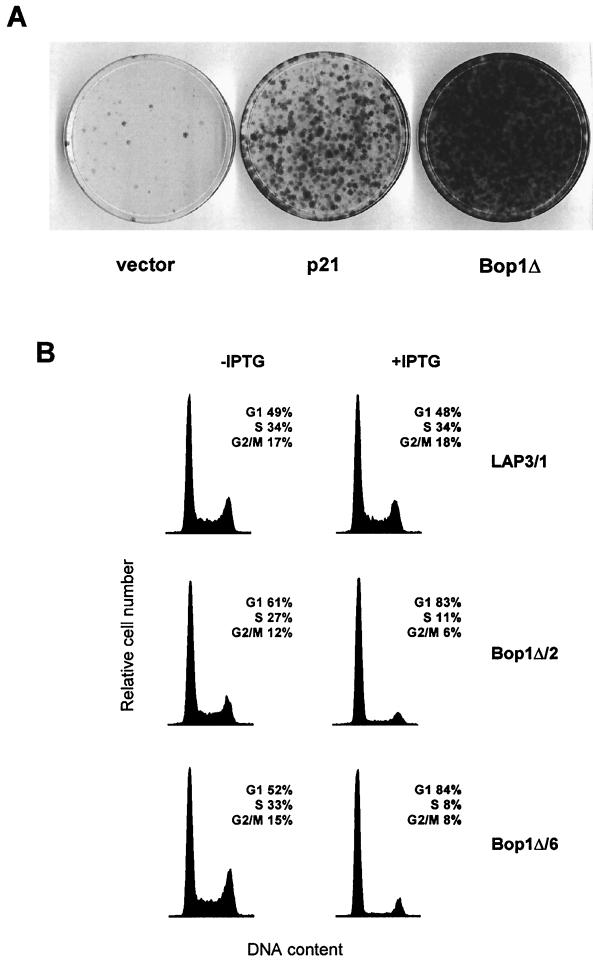FIG. 1.
Expression of Bop1Δ in asynchronously growing cells induces reversible G1 growth arrest. (A) LAP3 cells were cotransfected with pPGK-puro, which confers resistance to puromycin, and either the empty IPTG-inducible vector (pX11) or constructs for inducible expression of the Cdk inhibitor p21 (pX11-p21) or Bop1Δ (pX11-Bop1Δ). Equal numbers of stably transfected, puromycin-resistant cells were treated in parallel with IPTG for 24 h to induce expression and then with IPTG and BrdU for 48 h to selectively kill proliferating cells, as previously described (46). Cells that did not replicate DNA during this period and therefore survived the treatment were rescued by removal of the BrdU and IPTG, grown for 8 days, and stained with crystal violet. The number of colonies thus reflects the number of cells that were reversibly cell cycle arrested while under IPTG induction of the transfected gene. (B) Bop1Δ causes accumulation of cells in G1. Parallel cultures of asynchronously growing cells were left untreated (−IPTG) or treated with inducer for 24 h (+IPTG) and subjected to flow cytometry analysis. Two independent clonal lines that inducibly express Bop1Δ (Bop1Δ/2 and Bop1Δ/6) and a control clonal line (LAP3/1) transfected with the empty vector were analyzed. Histograms of the cellular DNA content and the calculated distributions of cell populations in different phases of the cell cycle are shown.

